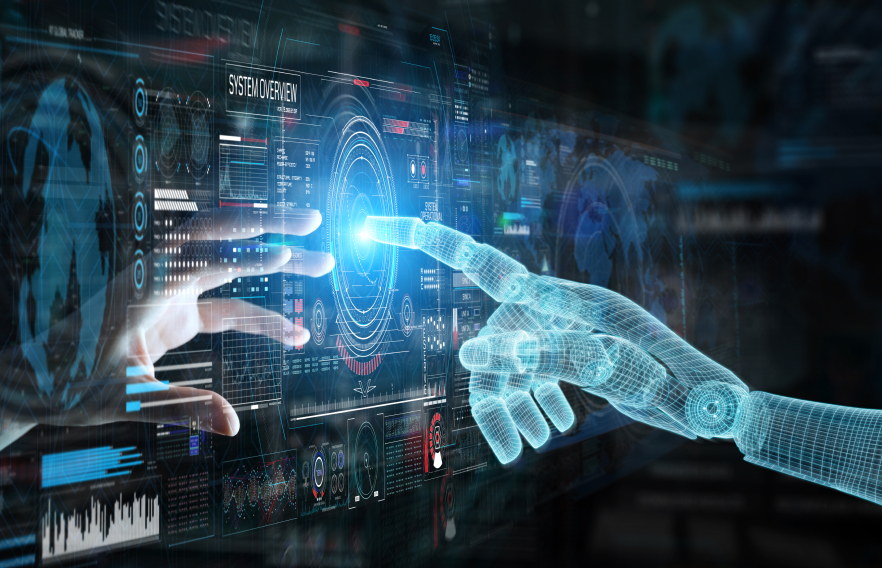Do Androids Dream of Electric Sheep?
Author Philip K. Dick posed this question as the title of his 1968 novel that was the basis for the film Blade Runner. The underlying themes of this story include the ethics and philosophy of sentient AI in androids. Two years after the story’s “futuristic setting” of 2019, humans are exploring much more specific AI use cases that are nothing like those spun out in the science fiction story. Instead of having to distinguish android “replicants” from real humans, many people are struggling to disambiguate terms such as Data Science, Artificial Intelligence (AI), and Machine Learning (ML).
These terms have all become buzzwords commonly found in the business and tech world. But knowing exactly what Data Science, AI, and Machine Learning mean and how to leverage their advantages is crucial for any digital-savvy organization in the 21st century.
Data Science and the Rise of AI
The field of data science is fundamentally about organizing and using data to provide insights for human decision-making. Developing the capability to glean insights from data has become crucial for startups and Fortune 500 companies alike. Many organizations have been collecting unprecedented amounts of data from both physical sensors and the online activity of millions of people—but a pile of unorganized data will not yield insights on its own.
This is where data scientists come into play by cleaning up and organizing data to make it suitable for analysis. They also build the statistical models necessary for analyzing data to reveal notable patterns or trends. In more recent years, their responsibilities have extended to using computer programming to create the tools that make data analysis more efficient.
All this work by data scientists paves the way for several key types of data analysis:
- Descriptive analytics aims to gain insight into either current or historical data trends.
- Predictive analytics looks to gain insight into future unknowns by using the best available data to make predictions.
- Prescriptive analytics can recommend what humans should do given the available data insights.
Humans have increasingly teamed up with machines in making the most of data science. The emergence of modern AI based on Machine Learning has significantly boosted Predictive and Prescriptive Analytics.
In the broadest practical terms, AI refers to a set of tools that can automate machine actions in ways that mimic intelligent behaviors. Contrary to science fiction stories about AI demonstrating general human-level intelligence, most modern AI systems have a very narrow set of capabilities designed to perform specific tasks for various applications.
A small sample of such applications might include:
- Visually identifying cats and dogs in social media photos
- Translating between different languages in the text found on websites
- Detecting possible signs of cancer in patients’ X-ray images
Machine Learning in Modern AI systems
Most modern AI is based on Machine Learning: a category of computer algorithms that can automatically learn from data. Instead of relying on humans to program each step, ML models train on large datasets to identify notable patterns within the data and make their own predictions based on that information. They can then apply the lessons learned from their training datasets to analyzing completely new and unfamiliar datasets in the real world.
The importance of the training data means that ML performance depends greatly upon having access to large and diverse datasets of high quality. For example, a Machine Learning model that trains to recognize dogs by only looking at 100 images of Siberian Huskies is unlikely to perform well when suddenly tasked with identifying tens of thousands of images from a diverse array of dog breeds.
That is one reason why humans still have an important hand in developing and improving machine learning models. People typically do the work of labeling each piece of training data—such as identifying each dog image through a label—so that the machine learning models can learn from those examples. They can also change certain parameters during the training process to nudge machine learning models toward producing more accurate results.
ML models can follow several different approaches:
- Supervised learning relies heavily upon hand-labeled training datasets and is the most common type of machine learning.
- Unsupervised learning sifts through unlabeled data to try and find unusual patterns that might escape the human eye.
- Reinforcement learning uses trial and error to learn from mistakes and get closer to achieving a specific goal.
Combining Human and Machine Intelligence
Whatever the flavor, ML has become an incredibly useful tool for both AI and human decision-making. For the AI systems that power Google’s search engine and Netflix’s recommendations, ML has automated much of the process of learning from real-world data and continually improving performance based on feedback.
Machine Learning has also been helping to automate much of the analytical modeling process that data scientists would otherwise have to do manually. That frees up data scientists to spend more time helping organizations understand and transform data insights into impactful actions.
Here is just one example of how Data Science can intersect with AI based on Machine Learning. Let us assume that an Internet search engine company wants to provide and monetize the most relevant online searches in response to the query: “Allergy medicine for kids.”
- Data scientists help collect and organize large datasets containing millions of user search results related to allergy medication for kids. Then, they work with software developers and engineers to build machine learning models that learn from these datasets.
- Through training, machine learning models can identify user preferences for various search results, such as information about what allergy medications come in the form of syrups and chewable tablets. This helps to continuously update the search engine— so that it delivers more relevant results and ranks them higher.
- The search and click trends identified by the machine learning models also provide information about people’s medical needs and shopping habits, such as certain allergy medicine brands being more popular among families in a specific geographic area at a certain time of year. Data scientists analyze these trends to find business insights that they can share with corporate leaders and online advertisers.
When combined with data science, ML predictions about industry and market trends can yield big-picture insights that inform C-suite decisions about launching new products or services. They can also provide immediate and actionable insight into how employees should handle a specific customer complaint or assist in shopping decisions. Organizations that choose to invest in the capabilities to leverage data science, ML, and AI can supercharge their human decision-making at all levels.
Partner with Us
At LatentView Analytics, our data science experts seize the opportunity to make sense of big data and turn them into insights for our clients to make data-driven business decisions. Get in touch with us at marketing@latentview.com to know more.



